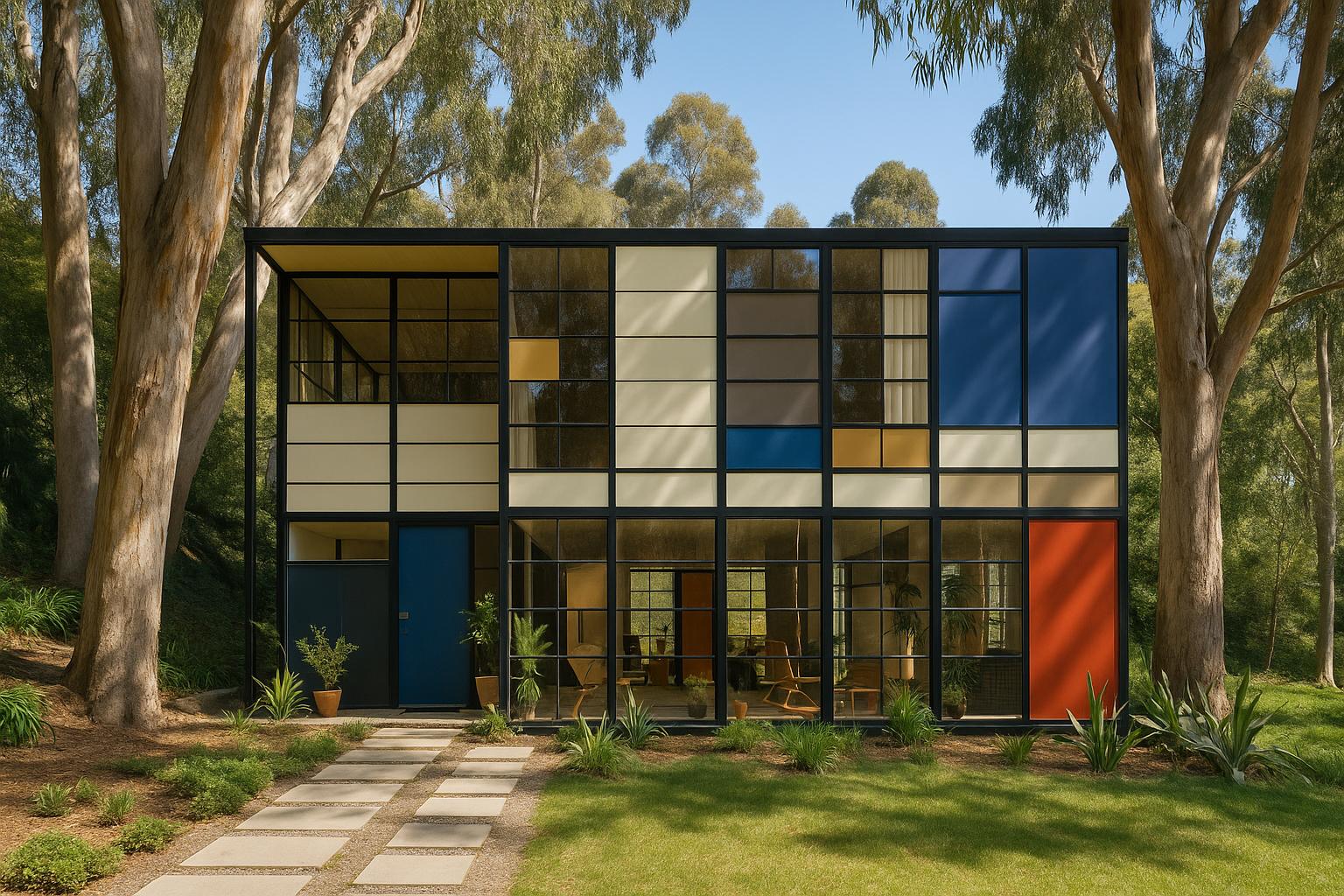Contents
The Eames House: A Landmark in Architectural Innovation
The Eames House, also recognized as Case Study House No. 8, remains a significant example of modernist architecture and forward-thinking design practices. Nestled in the Pacific Palisades neighborhood of Los Angeles, this architectural wonder was conceived and executed by the visionary couple Charles and Ray Eames in 1949. The construction of the house was integral to the broader Case Study House program, which sought to exhibit novel ideas in residential architecture during the surge of post-war construction. This initiative aimed to present affordable and sustainable residential solutions through the use of modern materials and innovative design concepts.
Architectural Design and Influence
The design of the Eames House leaned heavily on prefabricated materials, distinctly separating it from the conventional construction methods of that period. Primary building materials such as steel, glass, and plywood were utilized due to their cost-effectiveness and the expediency they afforded in assembly. These industrial materials contributed to the house’s distinctive aesthetic, which was thoughtfully balanced by the lush and verdant natural environment in which it was set. This created a harmonious dialogue between the built environment and the surrounding landscape, a principle that is often celebrated in modern architectural works.
Architecturally, the Eames House is composed of two distinct rectangular volumes — a living space and a studio. These two spaces, nestled into the hillside, represent a pioneering approach to the division of domestic and creative environments. The separation was deliberately designed to cater to the functional demands of a working and residential space, addressing the need for environments that are both practical and aesthetically enriching. Charles and Ray Eames crafted their home to be a living embodiment of their design ethos, serving as a source of inspiration and creativity while providing the comfort necessary for everyday life.
The Role in the Case Study House Program
The Case Study House program, spearheaded by Arts & Architecture magazine, was a forward-looking initiative aimed at reimagining the American home. This program encouraged architects to utilize modern materials and techniques to create homes that were not only affordable but also sustainably built. The Eames House stood out among these projects primarily due to its innovative employment of industrial materials within a residential context. This approach underscored the flexibility and potential of these materials to meet domestic needs while maintaining a contemporary aesthetic.
Impact on Modern Architecture
The significance of the Eames House transcends its immediate geographical context, having considerably influenced the principles underpinning modernist architecture globally. Its open spatial configurations, seamless integration with nature, and overall design efficiency pre-empted architectural trends that would come to define later decades. It became an emblem of the mid-century modern movement, its impacts felt across architectural and design fields worldwide. The holistic design philosophy adopted by the Eameses was an embodiment of their belief in the seamless integration of form and function, a principle that they applied not only in architecture but also in their celebrated furniture designs.
Preservation and Legacy
Preservation efforts of the Eames House have been diligently overseen by the Eames Foundation. The house was honored with the designation of a National Historic Landmark in 2006, a measure that underscores its historical and architectural importance while ensuring its continued preservation. Today, the Eames House is more than just a piece of history; it serves as an educational resource, enlightening the minds of budding architects and designers. By retaining the original furnishings and artworks integral to the Eames’ vision, the house provides a rare and authentic glimpse into the past. It serves as a timeless case study in innovative and sustainable residential design practices.
Conclusion
The Eames House continues to stand as a beacon of modern architectural thought. Its groundbreaking use of materials, thoughtful integration with its natural surroundings, and vital role in the Case Study House program underscore its enduring significance. As a masterpiece conceived by Charles and Ray Eames, it remains influential, continuing to inspire and educate about the vast possibilities inherent in modern design. The Eames House is not merely a relic of architectural history but a living testament to visionary principles that still guide contemporary design practices.

